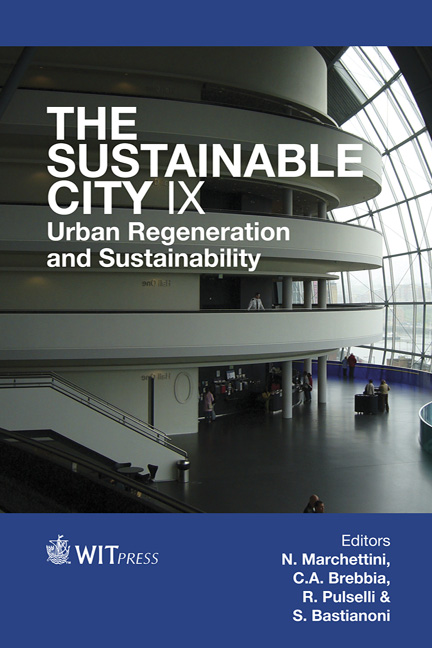Monterrey Envisioned As A Smart City Developed Through International Model Examples
Price
Free (open access)
Transaction
Volume
191
Pages
14
Page Range
51 - 64
Published
2014
Size
306 kb
Paper DOI
10.2495/SC140051
Copyright
WIT Press
Author(s)
P. Phumpiu Chang, J. L. Rivera Kuri
Abstract
Cities evolve constantly and adjust to new requirements. The fragmented vision of a city leads to design and elaborate strategies focused on some issues, letting others aside failing to develop the city strategies as a whole. Cities of today are analyzed with features based on the three pillars of sustainability, social environment and economic environment, as the driving forces to achieve quality of life. Nevertheless, modern cities find themselves contested in their technological endeavour and in their social reclamation of urban spaces. The great majority of technology and smart cities’ detractors do not believe technology could offer features to attain quality in the social environment. Social and technology features could attain visions of sustainability, only if they are integrated to economic strategies to make them sustainably feasible. The objective of this paper is to analyse case studies with the characteristics of sustainability as well as of the smart city in the attempt to merge features that are commonly fragmented and thus to create a broader perspective for designing strategies. The built environment and social network created under a feasible financing scheme are the support for the ultimate goal that is to generate the sustainability culture where technology engineers share the leading role with environmental and social professionals. The result is the identification of opportunities for Monterrey, Mexico, to guide its beginning path towards a smart-sustainable city.
Keywords
smart city, sustainable cities, urban built infrastructure, technology, Barcelona, Curitiba, Singapore, Hammarby Sjöstad, Monterrey





